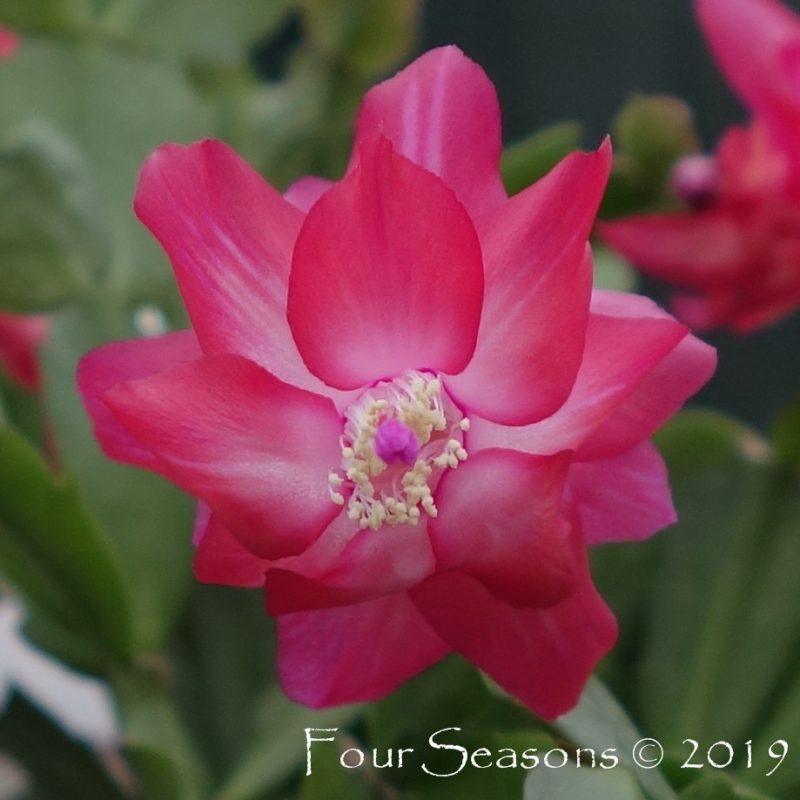If there was a plant that you could safely bet your grandmother had at one time or another, it would almost be a sure bet it was a Christmas cactus. Christmas cactus’ claim to fame sometimes is the fact that they can, and have, been passed down generation to generation. Since they’re among the easiest of the winter blooming houseplants to divide and share, this reputation is well deserved.
Most people don’t realize that what many think of as “Christmas cactus” aren’t really “Christmas” cactus at all. A more accurate term would be “holiday cactus” because some bloom around Thanksgiving, some bloom closer to Christmas, and some bloom towards spring- usually around Easter. There are differences in each of them and once you know what you’re looking for, it’s fairly easy to tell them apart.
The easiest way to tell if it’s a Thanksgiving cactus is that the edges of their flattened stem segments resemble a crab’s claw. The leaf margins will be pointed like hooks or claws. When grown under normal light conditions, these plants bloom on or around Thanksgiving.
True Christmas cactus are easily identified because they have smoother, rounded edges to their stem segments. They will bloom closer to Christmas, usually have red blossoms and the true Christmas cactus can be difficult to find.
Easter cactus, or spring cactus begin to bloom around February and sometimes will bloom again during the summer months.
There are two tricks to making these cactus bloom. One is the same as with a poinsettia- natural daylight. From September 25th on make certain that the plant is exposed only to natural daylight, receiving no artificial light from indoor lamps in the evenings. The old myth is that you have to put it in a closet. While that’s not exactly true, you do want to keep it away from any artificial light source and you’ll want to be sure it receives approximately 12-14 hours of darkness each day to encourage the buds to develop and flower.
Continue this dark, cool treatment for 6-8 weeks or until blooms appear. Once the blooms have formed, move your cactus to a sunny location. The more light you give it, the more blooms it will produce. Christmas cactus will bloom better if they are pot-bound as well, so don’t be in a big hurry to transplant if the plant gets large. Keeping it dry and cool for this period of time will also help to initiate buds.
The second key factor to having it successfully re-bloom is temperature. We did some experimentation with ours this year and found better ways to make them bloom. Ideally temperatures should be between 70-85 degrees during the daytime with nighttime temps of 50-55 degrees. However, as little as a 10 degree variation will usually be enough to make your plant initiate flower buds. Since it is a tropical plant, you want to mimic the conditions found in the tropics- high humidity but don’t overwater. You can do this by placing it in a pan of pebbles or having a container of water next to the plant. This is especially important in our dry climate.
If you want to share your plant with others, simply break off a piece. Wait until after it has finished blooming, then take a short, Y-shaped segment from healthy plant foliage. Place in potting soil, moisten evenly and place in a well lit location, but out of direct sunlight. Transplant when the cutting shows signs of growth.
Available in shades of red, pink, coral, white, magenta and more, holiday cactus are among the most beautiful and vibrant of the winter flowering plants and well worth the effort. If you haven’t had one in your family in the past, consider starting your own legacy with one of these wonderful houseplants this holiday season!

